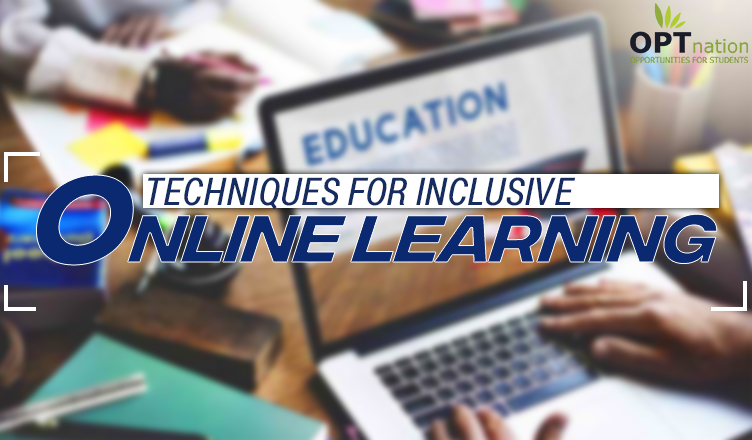The pandemic caught us by surprise and has thoroughly disrupted our lives with things from wearing masks to staying indoors. As a result, it was not surprising that parents and teachers had difficulty adapting to a sudden shift to remote learning when schools had to shut their doors for safety. Read and follow the Techniques to Provide Inclusive Online Learning covered in the article.
Teachers and parents were not the only ones facing barriers and challenges in that sphere. Many students are struggling and feeling frustrated with the changes. Some are unable to adapt due to learning preferences while others lack technical knowledge. Not to mention, a large number of students—approximately 7.3 million, according to the National Center for Education Statistics (NCES)—have a disability that makes it difficult for them to fully engage during online classes.
For all of these reasons, many students are getting left behind. Some are feeling discouraged, others feel isolated, or a combination of both. With the pandemic still ongoing, it is imperative that teachers and schools create an inclusive online class and one that meets the diverse needs of their students.
Some techniques to Provide Inclusive Online Learning that can help establish that diversity.
-
Allocate enough time for each student
The first step towards creating an inclusive learning environment, whether online or off, is to get to know your students. Each student is unique with their own unique experiences, culture, and capabilities. Allocate enough time to get to know each of them personally. Something as simple as learning how to properly pronounce their name can make a huge difference to a student’s morale.
Figuring out their unique needs and learning styles as well as understanding their limitations can help you plan lessons and employ strategies that can enable them to achieve their academic goals. Doing this also helps you establish strong, trustworthy relationships with them, making it easier for students to approach you online for any problems they may be facing.
-
Come up with unique teaching methods
You want to be efficient and effective when imparting information to your students. At the same time, you want to make sure they’re engaged and provide them with a better learning experience. Catering to various learning styles online is also quite different from face-to-face teaching. Because of these challenges, it’s important that teachers employ unique teaching methods to achieve these goals.
Take the time to test out various techniques that can make your lesson interactive, fun, and accessible to all your students. Keep in mind that you might have to combine two or more teaching methods to find the best fit.
One of the most popular effective online teaching methods is the Flipped Classroom. This method involves “flipping” the traditional class format. Instead of teaching the lesson in class, the students are asked to prepare for the lesson before class starts. This could mean asking them to read the class material or complete an assignment.
Class time, on the other hand, becomes reserved for discussion. Students are given the opportunity to talk about their understanding of the lesson and share their ideas. This promotes a dynamic learning environment that encourages interaction and critical thinking. It also helps students attain a deeper understanding of the lesson.
Adaptive learning is another method that teachers should experiment with. This method entails using various technologies as teaching devices to cater to the different needs and learning styles of the students. For example, visual learners might find watching a video as a more effective teaching medium. Some students may find it easier to absorb information when participating in discussion forums with their peers.
Using different mediums to convey concepts may seem like a lot of work. But it will keep students engaged and avoid any of them from getting left behind.
-
Focus on all the PDFs & documents
Make sure that all the learning materials provided are accessible to all students, including those with disabilities and low literacy levels. This means that any learning material you provide your students needs to be easy to read and understand.
They should also be compatible with assistive technologies such as screen readers. To help you create accessible PDFs and other documents, you can use tools such as an accessibility checker which are typically built in the document creation software such as Microsoft Word.
-
Get regular feedback
Regular feedback from students can enable teachers to understand how well their students are coping with the shift to online learning. It can provide them with input on what challenges each student faces in terms of motivation, learning style, and teaching method. Teachers can use all of that information to help students overcome their struggles as well as improve their plans and strategies for a more successful outcome.
ALSO READ:
How to Transform your Diversity Recruitment Strategy
Work in Progress
Creating an inclusive online classroom isn’t going to happen overnight. It takes a lot of effort on the teacher’s part to make sure that every student in the class is thriving. Make sure to take the time to learn more techniques and test them out in your classrooms, and don’t forget to share your experiences online. We’re all in this together—parents, teachers, and students.
| About the Author – |
| David Gevorkian started BeAccessible.com because of his passion for website accessibility and ADA compliance. He spent much of his career working for financial institutions creating websites and mobile applications. He earned his Master’s in Business Administration from Salve Regina University in Rhode Island. David is an advocate for creating web interfaces usable by all people. He enjoys recording music and playing soccer with friends. |

